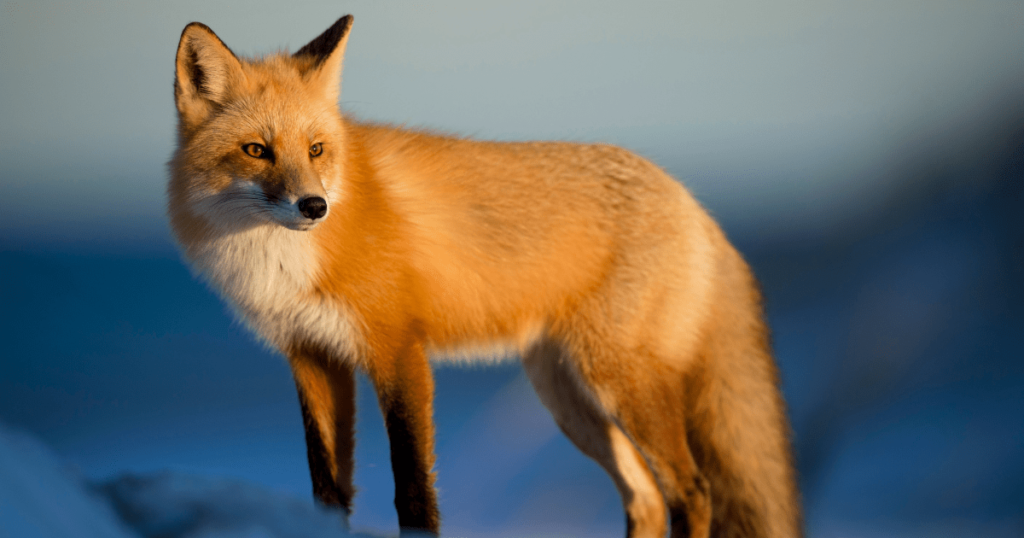Foxes occupy a special position in human curiosity because they live as residents of the wild realm along with other unique animals. The smart, agile, and adaptable fox has triumphed over diverse ecological settings, including dense woodland areas besides extensive plains and urban residential areas, and municipal parks. The basic and commonly asked question about this astute wild mammal remains: What does it eat? What do foxes eat?
Seasonal Diet and Ecosystem Impact
The diet analysis of foxes provides essential knowledge about their survival skills alongside habitat adaptation. This comprehensive guide explores foxes’ dietary behaviors as well as how they alter their food choices according to specific seasons and environments, and their impact on natural ecosystems. People often ask, “What do foxes eat?” A comprehensive examination of the question “What do foxes eat?” follows while delivering an SEO-optimized and easy-to-read text targeting an international audience.
The Canidae family includes dogs and wolves, along with foxes, as its members. Foxes display true opportunistic eating behavior since they avoid specialized diets even though other relatives in their family have adopted such dietary approaches. According to their environmental conditions, foxes consume different items from the diverse range of available food. Foxes eat both animals and plants, so they belong to the category of omnivores.
The diet of foxes in their natural habitat includes most of their nourishment from small mammals. Voles, along with rats with rabbits, and mice, form the basis of their diet, which provides them with energy and protein. Foxes depend mainly on their remarkable hearing ability to track down buried and difficult-to-find prey. Foxes hunt more actively during warm seasons because the number of small animals is higher at that time.
Do Foxes Eat Birds?
Foxes consume birds as part of their diet. The predators focus their attacks on ground-nesting birds as well as their eggs and young birds. The agile hunting ability of foxes, combined with their stealth movements, enables them to approach prey undetected before attacking. Rural areas have experienced cases of foxes stealing chickens from coops, which leads to frequent farmer controversies.
Younger or small foxes without adept hunting abilities rely heavily on insects as food sources. Foxes thrive on eating beetles and grasshoppers and worms, and spiders as they offer both nutrition and easy prey value. Foxes act as key species that regulate insect populations within their ecological habitats.
Foxes occasionally choose reptiles alongside amphibians as a food item. During their food search, foxes will eat frogs and lizards, and small snakes, particularly in areas with water or wet conditions. The prey species typically exist within warm ecological zones or during summer months.
Fish consumption remains a rarity in the diet of these animals. Hopeful catchers of small fish, along with fish leftovers made by other creatures and humans, exist among streamside fox populations. The adaptable behavior of foxes shows their ability to capitalize on virtually all available food sources.
What Fruits and Vegetables Do Foxes Eat?
The diet of a fox extends beyond meat sources. The foxes feed on their diet using different combinations of fruits alongside berries and vegetables. During the autumn of plentiful fruiting plants, foxes commonly eat apples together with blackberries and other available wild berries. The nutrients and dietary fiber in plant-based food help complete their diet. The foraging practice of foxes serves as a natural seed dispersal mechanism, which makes them unintentional wild plant cultivators.
Urban-dwelling foxes adapt their eating habits to consume food provided by human sources. Urban foxes feed on outside pet food and garbage, and consume compost as well as food that people deliberately distribute to them. The adaptability of urban foxes extends to their learning abilities regarding food sources because this FOOD SOURCE knowledge influences their daily routines.
Changing seasons strongly determine what types of food foxes should consume. Winter brings plenty of food for foxes during the spring and summer months. Insects swarm the environment while birth occurs among young animals and seasonal fruits reach their ripest state. The ready food supply allows foxes to maximize their consumption during this period. In contrast, winter poses challenges. During times of scarcity, foxes must turn to scavenging for their food sources. These animals use their stored body fat while practicing infrequent hunting activities in the season. They might turn to eating rotting animal carcasses only when basic sustenance runs short.
A fox’s survival diet strongly depends on its habitat. The Arctic fox mainly feeds on lemmings and seabirds, but resorts to seaweed and fish eating when these sources become scarce. A red fox in England or the United States benefits from a wide food selection that spans from rodents and garden vegetables to the pickup of discarded pizza from rubbish bins.
The availability of prey coupled with environmental competition, guides how much foxes consume. When multiple predators share food sources at a site, foxes either adjust their feeding schedule to prevent conflicts or search for different prey types.
Despite being known for their cleverness and stealthiness, foxes encounter multiple difficulties while feeding. Larger predators such as wolves and eagles often prey upon foxes. Cars, together with poison risks and fights with household pets, endanger the population in urban environments. The diverse food choices available to foxes allow them to prevent starvation and sustain their population against existing dangers.
How Do Foxes Impact the Ecosystem
Evaluating the ways that foxes change their ecosystems remains a crucial topic for examination. Through their natural predation of rodents and insects, they stop these creatures from becoming persistent pests in their environment. The distribution of fox seeds across ecosystems helps to maintain a diverse plant community. In natural ecological systems, foxes act as pacing predators and nurturing protectors without consciously making this choice.
The adaptability of foxes should not be used to endorse their peaceful coexistence with human environments. The practice of either direct feeding or creating outdoor food supplies results in domestication and reduced natural caution, which creates risky encounters with people. Wildlife education stands as the foundation for securing peaceful coexistence between people and fox populations.
Conclusion
The question about foxes’ diet: you should know that these animals eat virtually anything available. Different types of food include birds and rodents alongside vegetation and insects, along with occasionally consumed scraps of fast food, form a part of what the environment offers foxes. Foxes succeed as wildlife and urban inhabitants because their dietary choices shift between seasons and habitats along with available food resources.



